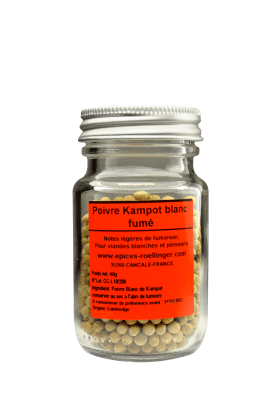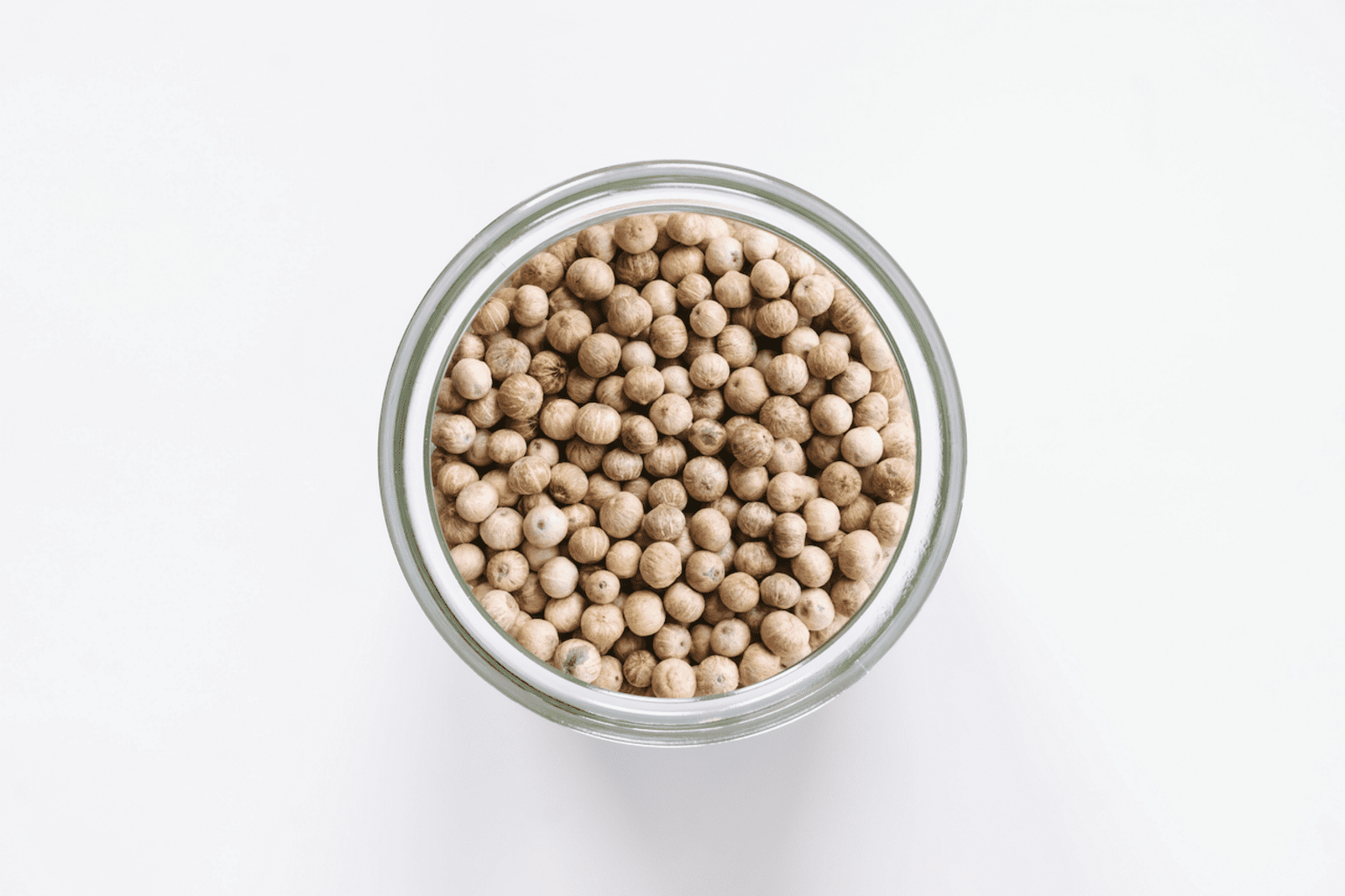Smoked White Kampot Pepper

Ingredients: Kampot White Pepper
Lightly smoky. Use to season white meats and fish.
€11.90
50 g
This product is temporarily unavailable. Receive an email as soon as this product is available again:
-
Allergens
Absent, except for cross-contamination.
May contain traces of sesame, celery, mustard, soy. - Origin Cambodia
- Storage / Use In a cool, dark, dry place
€238 / kg
Olivier Rœllinger's words
This pepper is for Kampot White Pepper lovers who enjoy Kampot White Pepper's exquisitely delicate and fresh qualities. The light, smoky taste of the smoked version is particularly suited to recipes that call for fish or white meat.
The peppercorns are cold-smoked with rice chaff and coconut shell fibers.
The peppercorns are cold-smoked with rice chaff and coconut shell fibers.
Story
Cambodian pepper has been renowned since the time of the Khmer Empire. It can be found mentioned in ancient and medieval texts including the travel journals of Chinese explorer Zhou Daguan in the 13th century.
Cambodian pepper's prestige captured the imagination and the palates of explorers right up to the 19th century, when the Dutch army arrived to fight the Aceh War in Indonesia. The Sultan of Aceh ordered all pepper plants burned to prevent to prevent the Dutch from plundering the gustative treasure. At the time, some of the pepper production was moved to the Kampot region in Cambodia.
By the end of the 19th century, French colonists had expanded the pepper trade and increased production to nearly 8,000 tons per year.
The quality of the pepper produced in Kampot continued to improve over the years until the Khmer Rouge came into power in 1975 and replaced pepper production with a rice monoculture.
For the next 30 years, pepper production all but disappeared. It wasn't until the end of the 20th century that growers on small family farms began to cultivate Kampot pepper once more.
Cambodian pepper's prestige captured the imagination and the palates of explorers right up to the 19th century, when the Dutch army arrived to fight the Aceh War in Indonesia. The Sultan of Aceh ordered all pepper plants burned to prevent to prevent the Dutch from plundering the gustative treasure. At the time, some of the pepper production was moved to the Kampot region in Cambodia.
By the end of the 19th century, French colonists had expanded the pepper trade and increased production to nearly 8,000 tons per year.
The quality of the pepper produced in Kampot continued to improve over the years until the Khmer Rouge came into power in 1975 and replaced pepper production with a rice monoculture.
For the next 30 years, pepper production all but disappeared. It wasn't until the end of the 20th century that growers on small family farms began to cultivate Kampot pepper once more.

